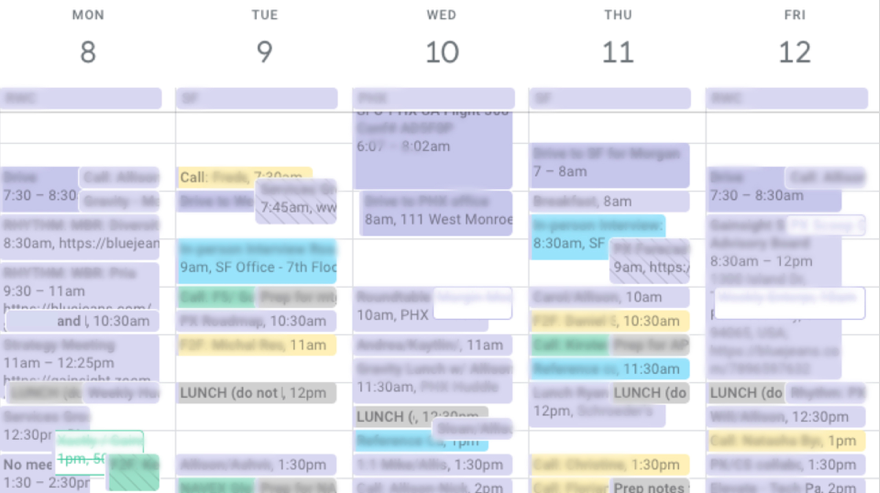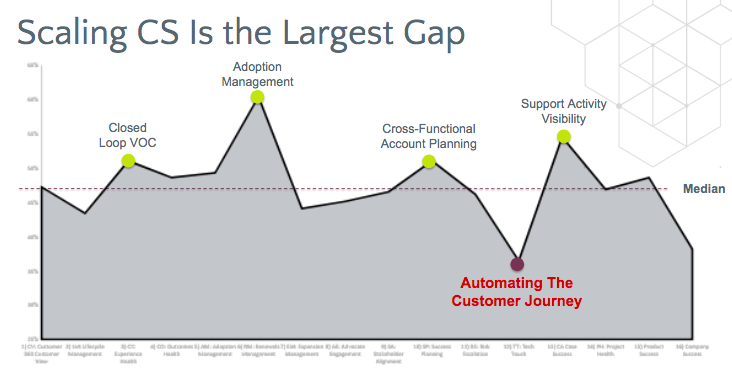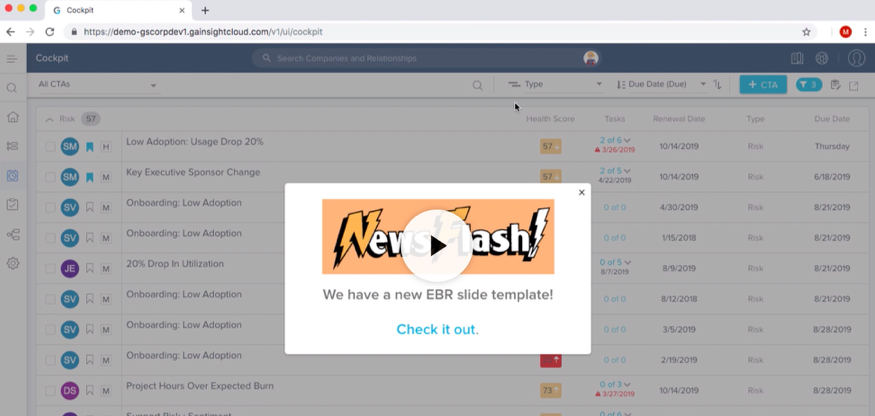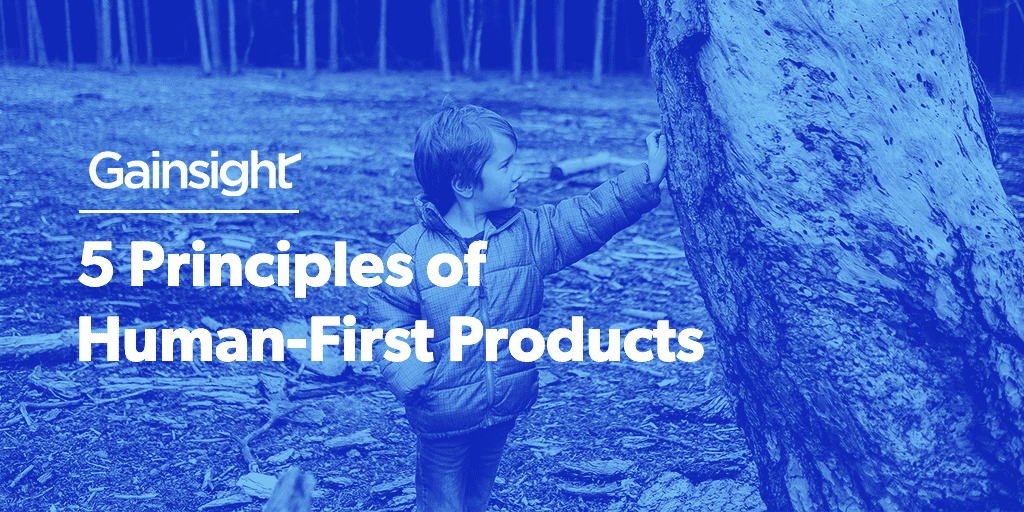As a COO, I’m always trying to figure out get a ton of things done in a short amount of time.
I’m constantly thinking about how to do more with less. The danger for someone like me is that when you give them technology, the standard for what counts as “efficient” dramatically increases.
Here’s what my typical work week looks like.

Technology helps me pack my calendar to the brim: any empty 30-minute time slot is immediately visible and available for me to book. In the two minutes I might have in between meetings, I flip through my inbox to see how quickly I can get back to inbox zero and how many text messages I can respond to. The busy-ness is such a good sign that our teammates want to collaborate, that clients want to meet, that there’s opportunity. But the volume of communication is exorbitant. I’m playing a day-long game of whac-a-mole.
It takes its toll. By the time I’m at home, I am completely fried. My long-distance vision has declined because I spend most of my day staring at one or more screens, 12 inches from my face. I’m not as familiar with city neighborhoods, because when I’m in an Uber, I spend the time responding to emails. I am more forgetful than I used to be, because my brain operates in short-term memory as opposed to long-term storage.
I have my coping mechanisms. I don’t check email in the morning until I’ve read a book for ten minutes, so my mind is in a more focused state. As a general rule, I don’t check email after 7:30pm; if someone needs to reach me, they know to text or call. I spend Saturdays completely outdoors, usually hiking in the Marin Headlands across the Golden Gate Bridge.
As much as I try to protect myself against technology, I’m struggling. The problem is that when I’m living this way, I don’t feel completely human. I feel like I’m a slave to my technology.
Today, the treadmill of technology has eliminated every autonomous moment we experience, so that we rarely exercise the muscle of reflection. When we do have a spare moment of space, we fear it. A friend of mine said to me the other day, “I don’t want to pause and reflect, because it’s terrifying to imagine what I’d think about.”
Products today reinforce and take advantage of our basest emotions—especially feelings of inadequacy and fear of missing out or being left behind. They erode behaviors we once valued and that I would argue make us more human: independent thinking, deep consideration, and control over our actions. Products today don’t speak to our highest human nature. Technology has become first; humanity, second.
In March, my partner Scott and I planned a trip to celebrate his birthday. We decided to go “glamping,” which means glamorous camping. It involves sleeping outside in a tent, but with electricity. What’s fascinating is that you forget entirely that the technology is there, because it’s hidden in the background of nature. Our humanity comes first; technology is here for us when we need it, but it’s a servant to our higher interests.

Scott and I spent the day discussing the deeper things in life while wandering through the forested hills. I even had a couple of breakthroughs about my work at Gainsight, which I never could have envisioned in the daily ritual of whac-a-mole. In this environment, humanity was first; technology, second.

Technology-First Products
Software products today don’t fulfill this human-first standard. They don’t recognize the humans they should be supporting as independent thinkers. They instead refer to humans as “users,” as a large mass of units, perhaps distinguishing among them based on groupings, such as “persona” or their company’s size. These are users to be “activated” — like a machine — or “converted”—which sounds like religious conversion. The technology is supposedly the source of religious insight; the humans, mere recipients.
Products therefore come with a vision that says “people need to change,” but the product doesn’t facilitate that change. So a company buys a new product, and they look to roll it out, and the team struggles. As a group of naturally independent thinkers, these users are dumbstruck by the thought that they have to conform their entropic thinking to the mostly inflexible interface of today’s software—or else risk not performing in their jobs. They’re smart, so they’ll eventually figure out where to click and how this software might help them. But the act of conforming to software dehumanizes them. In a moment of independent thinking, one of these “users” might ask, “Why doesn’t the software conform to us?”
Our industry is so far from this ideal that thinking about this might generate feelings of cynicism among us. One might say: “We’re all trying to make money, after all—both the vendors and the buyers who want their teams to operate with greater efficiency.” That may be true, but I believe that in the future, the ability for both sides to make money will depend on the degree to which technology conforms to and reinforces the most elevated of human behaviors. What will matter in the future is the degree to which a product is “human-first.” And I believe that together, this community can help create a new era of human-first products.
What do I mean by a human-first product? I’d put forward 5 principles for how a product should view the humans it serves.
The 5 Principles
A human-first product should treat each human as:
- Growing: The product treats each human as having the raw material to improve their ways of working—but importantly, only if given time and coaching to master the new way, autonomy in how to do it, and clear alignment with a purpose.
- Special: The product treats each human as unique, with distinct beliefs, preferences, and motivations, not as an undifferentiated user. The product is inclusive of that specific human.
- Vulnerable: The product recognizes that a human can be abused by others who have their data on how they’re using a product. It therefore assumes by default that any data gathered is owned by the human who generated it, and offers meaningful ways to use the product without being forced to waive rights to privacy.
- Ends, Not Means: The product holds the humans it serves as ends in themselves (with technology as a means to their goals), taking their feedback seriously and adapting its approach accordingly.
- Autonomous: The product reinforces independent thinking and decision-making.
At Gainsight, we haven’t fulfilled these 5 principles. You might think that this post is hypocritical, but rather, it’s an admission of guilt. That said, I honestly can’t think of a single product that has fulfilled these principles. Our industry is not there yet. And it will probably take us a while—likely many years—to get there. To offer up a map to get us to that destination, I’d consider these 5 principles to be the 5 different stages of improving a product so that it becomes human-first.
The Path Forward

Stage 1: Growing
Instead of expecting humans to adopt products instantaneously (“Go figure it out!”), let’s design the product’s UI itself so that it coaches people over time on how they can take advantage of it and why it helps them. A simple first step is for Customer Success and Product teams to work together to create in-app guides to walk users through new releases.
Stage 2: Special
Product teams should design ways to learn about what makes a person unique, and help create a correspondingly unique experience for them. Customer Success teams should have tools to visualize clients as more than accounts, but rather as collections of unique individuals who need to work together. The goal is to be inclusive of every client.
Stage 3: Vulnerable
At the same time, gathering tons of data on people makes them vulnerable. So Product Managers need to create unique experiences while honoring people’s need for privacy. And Customer Success Managers need to ensure that clients’ sensitivities are communicated well.
Stage 4: Ends, Not Means
Since technology is a means to a human’s ends, products should adapt to what that human needs. As a starting point, Product Managers need to create a 360-degree view of feedback from clients, and also learn about what clients need based on their adoption of the product. And CSMs can contribute their observations to that 360-degree view.
Stage 5: Autonomous
Finally, products should be a “pull,” not a “push.” Products should help clients test their own hypotheses, not merely push recommendations. And CSMs should ensure that the configuration that’s rolled out isn’t overly rigid.
For the sake of a more humane software industry, Customer Success and Product Management can come together to help our industry honor these principles, and even to come up with new principles as well. But there’s also a business reason for CS and Product to come together to design human-first products.
The Scaling Problem

Last year, we surveyed 100 Customer Success leaders about the maturity of their organization on a number of different capabilities. The most difficult pain point was automating the customer journey. And I’ve personally heard from many of you, “I need to scale my team.” I’ve also said this about Gainsight’s Customer Success team. It’s worth us asking, what’s the root cause of that need to scale in CS?
Imagine a hypothetical conversation, where we ask ourselves “why” nine times:
“Why do you need to scale?”
“Because Customer Success isn’t a priority at my company.”
“Why are you saying it’s not a priority?”
“Because my CFO won’t give me more budget.”
“Why isn’t your current budget sufficient for helping your clients?”
“Because my CSMs have too many accounts.”
“Why is that account load too significant?”
“Because my CSMs are already working nights and weekends in answering client emails, hosting best-practice calls, conducting trainings, running EBRs.”
“Why do they need to do those things?”
“Well, because our clients need it.”
“But why do they need tons of email responses, calls, trainings, etc.?”
“Well…because that’s what it takes to enable adoption of our product.”
“Why is your product hard to adopt?”
“Well, because…well, we released this new feature recently, and it was half-baked. So we had a slew of calls with clients about that. We also have a backlog of enhancement requests, and it means we have to do this work-around for our clients, which takes some time.”
“Why aren’t you solving the product gaps?”
“Umm… Well, that would be great. But it’s not my responsibility. That’s up to the Product team”
“I thought you said your responsibility was to scale?”
“Right… Well, I guess it’s a shared responsibility.”
“Sounds like you and your Product leader should set up a meeting.”
“Interesting.”
We have a massive scaling problem in our industry because we’re not designing human-first products.
This is an ethical problem. It’s also a business problem.
Human-First at Gainsight
At Gainsight, we haven’t solved this problem yet. But I’ll call out a few ways in which we’re trying, which may inspire others to do the same.
The typical CSM spends their day primarily in the thick of trying to enable Principle #1, Growing. For most products, there is a gap between what the product does out of the box, and what the client instinctively hopes it will do. That gap is filled by the CSM, who tries to help these poor people figure out what to do with this software that doesn’t guide them on how to benefit. The CSM can often help, but truly, they are filling a gap—a change management gap—that should be filled by the product itself. A human-first technology would do that.
At Gainsight, we’re looking to live up to the standard of human-first technology by recognizing our clients as “growing” humans. We’ve heard from you that getting value from Gainsight requires managing your teams through change, and we want to make that easier. So for the first time, when you implement Gainsight or roll out changes to your configuration, you’ll be able to guide your team members along their journey—through a new product that we’re calling Enablement Engine. It also helps you coach your CSMs on preparing for EBRs or contributing to a new internal initiative. Enablement Engine is already available to a number of Gainsight clients and will be available broadly in August. It’s a small change, but it’s a step we need to take to live up to the principles of human-first technology. (You can learn more about Enablement Engine and best practices for scaling your CSM team here.)

And, if you’d like to guide your own clients through the meaningful change that comes with using a new product or feature, you can learn more about Gainsight PX here.
For the first time ever at Pulse, we’re excited today to bring together Product leaders and Customer Success leaders in the same conference. There is an enormous opportunity for the Product leaders here to build products that guide people through a journey from fear and confusion to success. There’s also an opportunity for Customer Success leaders, who are staffing teams to break down the barriers between human and machine. Perhaps this will be the start of a new era, in which Customer Success and Product Management join together to deliver technology that is human-first.
If I can leave you with one thing, it would be the feeling you have when you’re walking through the woods. The clarity of thought. The freedom. The empowerment.
What if every product experience could be like a wondrous hike through the woods?


